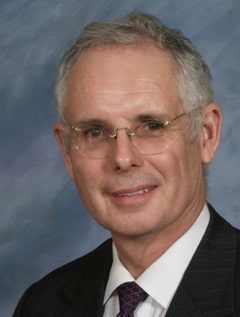Neal Shields
Recently the Business Roundtable made a statement that American businesses needed to pay greater attention to their responsibilities to “stakeholders” and society.
The Neeley School of Business at TCU has a “Values and Ventures” competition for business plans that best incorporate “societal values” into the business model, and they are actively teaching a “shared values” concept.
For me the last straw was when no less than Nikki Haley made a statement to the effect that businesses weren’t paying their fair share of external costs – Al Gore’s “externalities.”
The idea that “values” need to be artificially introduced into a business plan seems to me to be like saying that you need milk in ice cream. If you are not providing value and “social justice” in a business plan, it isn’t a business plan, it is probably a Ponzi scheme. I see “social justice” efforts as a scheme to substitute the values of the “intelligentsia” for the values of society.
As if that wasn’t harmful enough, it seems to me that we are leading young entrepreneurs to believe that there is a vast reservoir of excess wealth in businesses that can be better allocated for the good of the world. This may be one of the reasons for the abysmal success rate of young entrepreneurs. (See recent MIT study: “The 20-year-old entrepreneur is a lie”)
Also in a recent study, Dr. Aswath Damodaran at the Stern School of Business, shows that the average publicly traded corporation in the U.S. is returning a negative 2% over the weighted average cost of capital. Ignoring the size of “excess capital” created by a business and even saying that free market capitalism isn’t the optimal way to allocate resources to achieve social justice, the next question is, what does “social justice” look like in a business? How should resources be allocated?
In my opinion, to paraphrase Winston Churchill, capitalism is the worst way to allocate wealth, except for everything else.
However, that begs the question: How fairly does capitalism allocate wealth? What do the underlying numbers actually look like? What should they look like?
Much of what drives this dialogue is the fact that GAAP are designed to find a profit number so that a tax bill can be calculated. There is no effort or need to find an “added value” that the business’s operations create. The hue and cry then says: “Businesses don’t fairly share their profits.”
As GAAP doesn’t define “added value” we all have to come up with our own definition. My definition is the value of inputs (raw materials, utilities and labor) compared to the output. The value of products or services to the ultimate direct consumer.
Once you have a value added number it is fairly easy to calculate how that added value gets divided. The problem is that if you are working from public 10k filings it is a bit harder. The reason for that is the tax man doesn’t care how much labor is imbedded in the “Cost of Goods Sold.”
If you are going to use a 10k as a starting point for your numbers, you need a company so thoroughly in the spotlight that you can find hard numbers for salaries and benefits.
Because “Big Pharma” is currently being pillared as socially irresponsible, I decided to see how Pfizer’s numbers would look.
I used their 10k and added burdened payroll to EBIT to get a rough “added value” number. I then assumed that the average buy/sell spread to create a free market transaction was 10%, and added that number into EBIT and payroll to represent the added value to the consumer. I then “followed the money” to see how it was distributed to “stakeholders.”
For “taxes” I included all taxes paid until the money was spent for the first time. I estimated a sales tax number imbedded in salaries. However, in the end we only care what is going back to society so it really doesn’t matter if it is in taxes or salaries for this discussion. The reason I went through the extra trouble hearkens back to Samuel Gompers’ answer when asked what his workers wanted: “More.” If workers want more it’s important to fully understand who is the next fattest hog at the trough.
This is the result I got:
Employees $11,393,690.35 42.7%
Taxes $6,188,815.66 23.2%
Customers $5,364,700.0 20.1%
Stockholders $3,552,944.13 13.3%
C suite $173,568.35 0.7%
$26,673,718.50 100%
The total for non-C suite and stockholders was 85%.
If this isn’t “social justice” what is? Moreover, even if it isn’t “social justice” can we optimize the capitalization of labor with a model that is more “fair”?
I strongly suspect that most workers don’t want a system that is more fair and reduces their take-home pay.
Neal Shields spent most of his career partnered with and mentored by Holt Hickman in the manufacturing business. As part of his duties Neal called on automobile manufacturers as far flung as Japan and Eastern Russia. Later in life, after getting his MBA from TCU’ Neeley School of Business, Neal spent several years in social services and health care consulting. Now Neal can often be found on the bike trail, riding his state of the art carbon fiber bicycle, which was given to him for Valentines day by his wife Susan.






